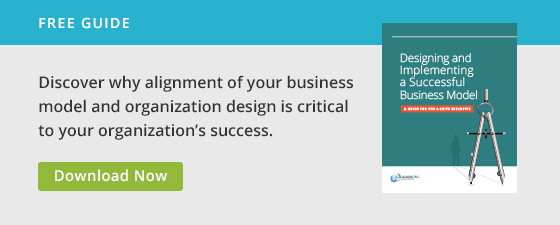Having the right people on your strategic business planning team is essential for achieving desired results. Leaders should include people who are aligned with the organization’s goals. It is also advisable to have people on your strategic business planning team who understand and agree with the logic used in making holistic business decisions, as well as the processes required to effect meaningful change.
Cross-functional teams of top- and mid-level leaders can be very impactful. By involving people from throughout the organization and giving them the opportunity to participate, it is more likely that everyone will be in alignment with the strategic business planning process and outcomes.
When assembling the right team:
- Include natural change agents and early adopters who are known to influence others in your company. Strong influencers can be powerful change agents since people trust and follow them.
- Consider high-potential individuals who have the ability to think outside-of-the-box. They can bring valuable insight to the strategic planning team because they are not stuck on keeping the status quo.
- Invite leaders who are traditionally resistant to change. Get them to buy-into and support the strategic plan.
- Bring local and front-line talent to the table when practical — they have first-hand knowledge of the processes and procedures that impact customer experiences.
- Involve external stakeholders in the process. They can provide insight in areas that your internal team might miss because they are looking at the strategic planning process from different perspectives.
Characteristics of good strategic business planning team members include:
- People who can focus on a new direction and strategy as the top priority.
- Team players who do not view their job or department’s success as good enough.
- People who are effective at communicating and debating ideas, but who can give themselves over to consensus after healthy deliberation.
- People who are mature enough to fully participate knowing that their role and others around them may be impacted.
- Individuals with high learning agility.
- People who can take a broad enterprise perspective.
Leaders need to communicate expected behaviors and champion enterprise thinking for the strategic business planning team. This includes defining the role of each team member. For example, top-line managers might have the right to vote on a change where front-line managers would only provide feedback.
While it is good to include all of the people necessary to make an impactful change, having too many participants on the strategic business planning team can slow down the process. It also requires more coordination and planning. Because it is a balancing act, think about the pros and cons of team composition and team size.
In a perfect situation, everyone on the strategic business planning team puts the best interest of the company before their own. It might be decided that certain business units no longer contribute value to an organization and should be eliminated. Team members who would be personally impacted by this decision should consider how it would benefit the entire organization instead of the impact to themselves or the people with whom they work. For example, during two days of intense conversations at a global supplier in the food industry, the executive team made the decision to shift the balance of organizational power. This decision eliminated the jobs of at least two people on the leadership team. Even so, everyone understood that the organization change they were going to implement was necessary to achieve the goals of the strategic business plan. Another group at a big box retailer began with a goal to cut costs and realized that a small but long-standing and respected group of expert technician-managers had to be eliminated. One of those managers was on the strategic planning team.
Strategic business planning is not an easy exercise. This is why it is so important to assemble the right team. Communicating the team’s mission, along with everyone’s role will ensure that the team operates efficiently and thinks holistically about what is in the best interests of the organization.

